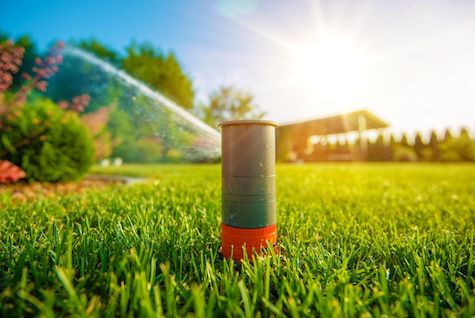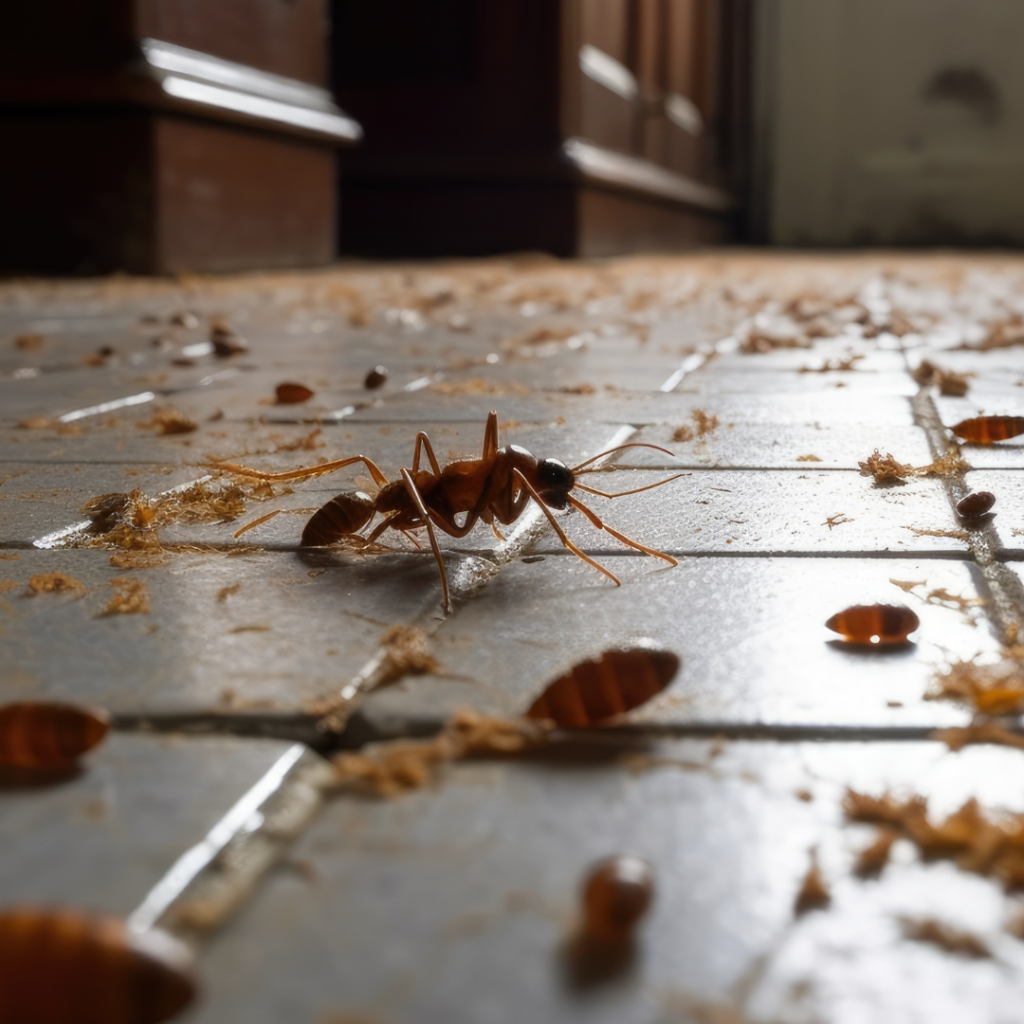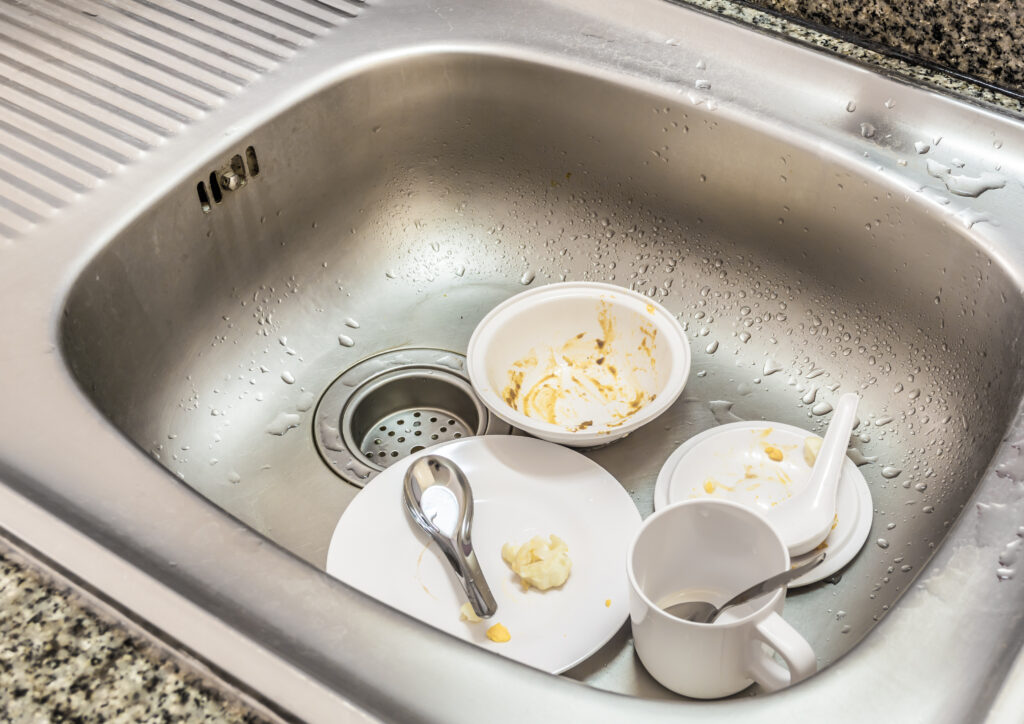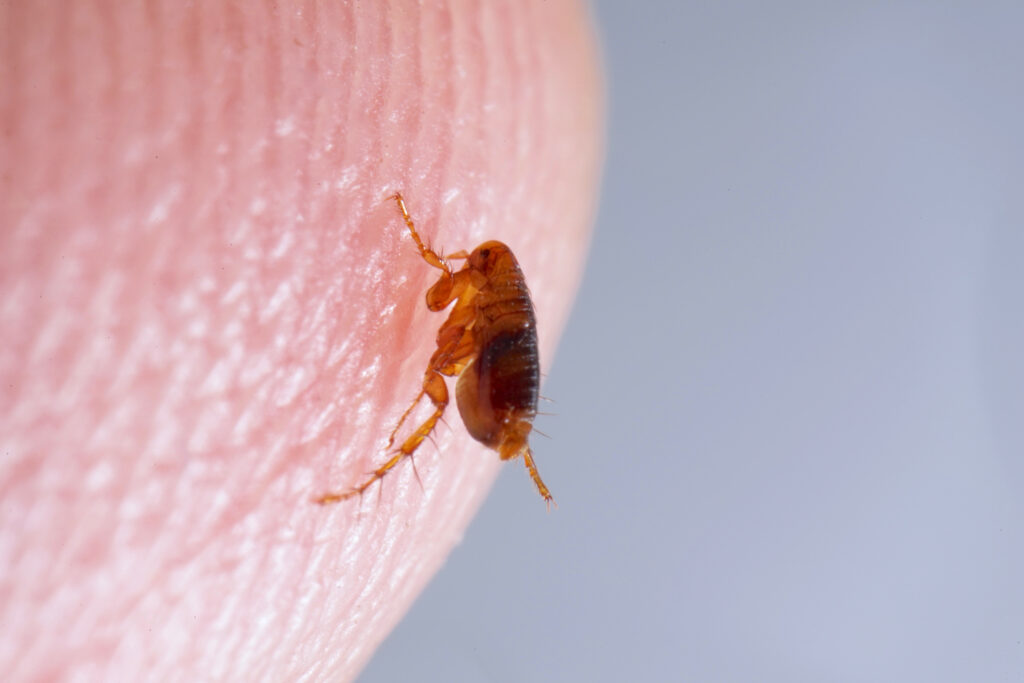
The later we get into the summer, the more often our customers ask about problems with their St. Augustine grass lawns. A lot of things can go wrong with even the healthiest lawns in our area, but there are three very common causes of lawn damage to watch for: chinch bugs, sod webworms, and gray leaf spot. Read on to learn more about identifying these pest and disease problems and what can be done to solve them.
Chinch bugs
We’re entering prime time for chinch bugs, which prefer the St. Augustine grass that’s so prominent in Northeast Florida. Once they’re in your yard, chinch bugs stay on the move, eating the base of grass stems and destroying one patch of grass before heading for another spot. A serious chinch bug infestation can damage a lawn to the extent that all new sod is needed.
According to the University of Florida, several other types of insects can be confused with chinch bugs, so take time to be sure these pests are your problem before deciding on a chinch bug treatment plan.
Chinch bug identification: Chinch bug damage will appear as round yellow patches or dying patches. Because both nymphs and adults feed down in your lawn’s thatch, you’ll need to part the grass near the damaged area to look at the thatch and soil. Pull up a small clump and check around the bottom for small (one-eighth to one-tenth of an inch long) bugs with flat whitish wings and black bodies. The eggs are tiny, starting out as white, then turning orange or red when they’re ready to hatch. Nymphs have reddish-orange bodies with one white band across the back.
You can also detect chinch bugs in St. Augustine grass by cutting both ends off of a metal can and pushing it down into the soil about 3 inches deep. Slowly add water to the can and watch for about five minutes to see if bugs float to the top.
Chinch bug control: The keys to controlling chinch bugs are the same as the keys to maintaining good lawn health: follow recommended mowing, irrigation and fertilization habits. Scroll down for information on proper lawn care.
Sod webworms
Tropical sod webworms are on the rise, and we’re not even at the autumn peak of their activity yet. Even if you have brand-new sod (which webworms love), you may be noticing tiny moths flying up from your lawn as you walk on it or see them swarming at dusk. Unfortunately, by the time you’re seeing the harmless moths, their caterpillars have already done the damage. The good news is that there are solutions for sod webworm control.
Sod webworm identification: The dingy brown moths are fairly easy to identify, but it’s the caterpillars you’ll need to look for. They are gray-ish green with brown spots and about an inch long when they’re fully mature. Signs of their presence on your lawn include brown or tan circular areas. These areas of your lawn will be shorter because sod webworm caterpillars are literally cutting down the grass. Check grass blades for cut marks along their edges or blades that have their tops cut off. You can also use the flush method to check for sod webworms: Put a tablespoon of any lemon-scented dish detergent into a gallon of water and pour it on an area you think may be infested. Webworm caterpillars will be irritated by this and will be flushed to the surface.
Sod webworm treatment: The cycle of laying and hatching eggs is non-stop, so a few webworms can grow into a lawn-destroying army if the problem is left untreated. There are do-it-yourself pesticides available, but there are downsides: Different products may be needed to get rid of the webworms in each of their various life stages, and you may also be eradicating beneficial insects that keep webworms and other unwanted pests naturally under control.
As with so many common St. Augustine grass problems, a good maintenance regimen is the best way to keep issues at bay. See below on best practices for irrigation, mowing and more.
Gray leaf spot
Heat, rain and humidity make August an unpleasant month for most of us, and it’s also not good for your lawn. St. Augustine grass fungus can take hold in these conditions—there are several types, including gray leaf spot disease. It seems counter intuitive, but the lush growth spurts we sometimes see during the peak of the rainy season can actually stress your St. Augustine lawn, making it more vulnerable to diseases such as gray leaf spot. The gray leaf fungus still survives during dry conditions—once rain and humidity rise, the fungus produces spores that can be spread by watering, rainfall, wind, or even moving equipment on wet grass.
Gray leaf spot identification: If your lawn has this disease, you may be seeing parts of your lawn thinning out. Closely inspect blades of grass in the affected areas, looking for grayish spots that have dark brown edges. According to the College of Agriculture, Forestry and Life Sciences at Clemson University, large areas of your lawn may have a scorched appearance, similar to that of extreme drought stress.
Gray leaf spot treatment: Gray leaf spot fungicide can be used, but preventive measures are always best. Hold back on water-soluble nitrogen fertilization if you can—new sod may be the exception—and practice good lawn care according to the tips below.
Mowing and irrigation tips for keeping your lawn healthy.
Compared to many other types of grasses, St. Augustine turf grows well under a range of conditions across the Southeastern U.S. No turf is completely resistant to pests and disease, of course, and even the strongest turf will become vulnerable to problems if it isn’t regularly maintained in the right way. Here’s what you can do to to help your lawn stay green and healthy:
- Keep your lawn at a height of 3.5 to 4 inches during the peak of the growing season.
- Don’t cut off more than one-third of the total height of your grass at any one time.
- Cut turf that’s in shady areas a little higher than the rest of your lawn.
- Keep your mower blade sharp so that you don’t tear up grass blades.
- Leave grass clippings on your lawn to reduce the need for fertilizers and return organic matter and its nutrients to the soil.
- Avoid watering too little or too much at a time—aim for about 1.5 inches of water per week.
- Shut off your automatic irrigation system to keep from over watering during rainy spells.
- During droughts, irrigate longer but less frequently to encourage a deep root system.
- Water early in the day to preserve water and allow your turf to dry out before cooler night hours.
Call Turner for a healthy St. Augustine lawn.
Even the most cared-for lawns can have pest and disease issues. If you see signs of problems, get in touch with us to learn about our comprehensive lawn and outdoor services, which include:
- Fungus management
- Micronutrient treatments
- Fertilization treatments
- Turf optimization product application
- Optional disease control problems
We offer free, no-obligation estimates and prices based upon the size of your lawn, so schedule your appointment today!



